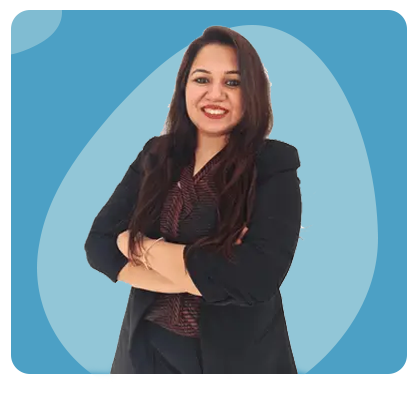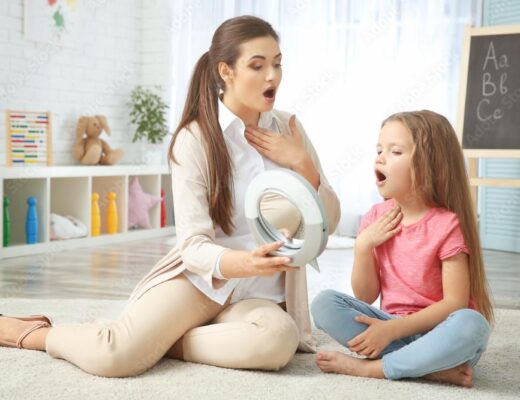What is Voice Therapy?
Voice therapy is a specialized intervention designed to improve voice quality and vocal function. It helps children who experience difficulties with their voice due to various voice disorders. A certified speech-language pathologist (SLP) guides children through personalized voice therapy exercises and voice therapy techniques to restore healthy vocal patterns. This therapy is crucial in preventing long-term vocal damage and improving communication skills.
Voice therapy not only helps in treating existing issues but also plays a preventive role by educating children and parents about proper voice care techniques. Addressing voice issues early on can prevent more severe problems in adulthood.
Voice Disorders in Children
Voice disorders occur when there are abnormalities in a child’s voice, causing it to sound hoarse, weak, breathy, or strained. There are different types of voice disorders, classified based on their causes and effects on vocal function.
List of Voice Disorders
- Functional Voice Disorders – Caused by improper voice use (e.g., vocal nodules, muscle tension dysphonia). These occur due to overuse, strain, or misuse of the vocal cords.
- Organic Voice Disorders – Due to physical changes in the vocal cords (e.g., cysts, polyps, vocal cord paralysis). These may result from infections, trauma, or medical conditions.
- Neurological Voice Disorders – Result from nerve-related conditions (e.g., spasmodic dysphonia, Parkinson’s disease-related voice issues). These disorders affect the control and movement of the vocal cords.
Classification of Voice Disorders
Voice disorders can be classified into:
- Hyperfunctional disorders (excessive tension in vocal cords, often caused by yelling, screaming, or chronic throat clearing)
- Hypofunctional disorders (weak vocal cord movement, leading to a breathy or weak voice)
- Neurological disorders (nerve-related problems affecting vocal control, often linked to neurological conditions such as cerebral palsy or muscular dystrophy)
- Structural disorders (physical abnormalities in vocal cords, often requiring medical intervention)
Causes of Voice Disorders
- Frequent yelling or screaming, which strains the vocal cords
- Poor vocal hygiene (e.g., dehydration, excessive coughing, or exposure to pollutants)
- Respiratory infections, such as colds and flu, that lead to voice strain
- Allergies and acid reflux, which can cause chronic throat irritation
- Neurological conditions affecting vocal control and coordination
- Exposure to second-hand smoke or other environmental irritants
- Habitual throat clearing, which leads to strain on vocal cords
- Excessive use of voice without proper warm-ups or rest
Symptoms of Voice Disorders
- Hoarseness or breathy voice
- Frequent throat clearing or coughing
- Loss of voice or reduced vocal range
- Strained, weak, or high-pitched vocal quality
- Pain or discomfort while speaking or swallowing
- Fatigue after talking for extended periods
- Difficulty controlling voice pitch or loudness
- A sensation of a lump or tightness in the throat

Voice Therapy for Kids: A Step-by-Step Approach
If you are searching for voice therapy near me, finding a licensed speech-language pathologist is the first step. Here’s how the process typically unfolds:
Step 1: Assessment and Diagnosis
A voice therapist evaluates the child’s voice through:
- Case history discussion, including medical and behavioral factors
- Voice quality assessment using acoustic and perceptual measures
- Laryngoscopic examination (if needed) to assess vocal cord function
- Identifying the severity and type of voice disorder through specialized diagnostic tools
- Detailed observation of the child’s daily voice usage patterns
Step 2: Developing a Personalized Therapy Plan
Based on the diagnosis, an individualized treatment plan is created. The therapist selects voice therapy exercises to improve vocal strength, coordination, and endurance. Parents and caregivers are also educated about voice care and home exercises to ensure continuous improvement.
Step 3: Practicing Voice Therapy Techniques
- Breathing Exercises: Diaphragmatic breathing to support voice production and reduce strain on the vocal cords.
- Pitch and Volume Control: Adjusting tone and loudness to maintain a balanced and natural vocal output.
- Resonance Therapy: Strengthening vocal cord vibration to improve clarity and reduce strain.
- Humming and Vocal Warm-ups: Enhancing vocal cord flexibility and preparing the voice for speaking.
- Silent Coughing & Yawning Techniques: Reducing throat tension and improving airflow during speech.
- Articulation and Phonation Drills: Strengthening vocal endurance and coordination to enhance speech clarity.
- Hydration Strategies: Encouraging proper hydration to maintain vocal cord health and flexibility.
- Postural Adjustments: Teaching children the importance of good posture in maintaining voice quality.
- Relaxation Techniques: Reducing tension in the throat and larynx to prevent strain.
Step 4: Monitoring Progress and Home Practice
Regular practice of prescribed exercises at home is essential for improvement. Parents play a crucial role in encouraging their child to follow the therapy plan. Therapists may provide:
- Daily voice care tips to prevent strain
- Progress tracking logs to assess improvements over time
- Customized vocal rest schedules for children who use their voices extensively
- Guidance on avoiding vocal abuse habits such as excessive shouting or whispering

Treatment of Voice Disorders in Kids
Voice therapy is the primary treatment for most childhood voice disorders. However, in some cases, medical interventions like medication, lifestyle changes, or surgery may be required.
Additional Treatment Options
- Medication: Prescribed for underlying conditions such as acid reflux or allergies.
- Surgical Interventions: For severe structural disorders like vocal cord cysts or polyps.
- Behavioral Modifications: Teaching proper voice use, hydration habits, and breathing techniques.
- Parent and Teacher Involvement: Educating caregivers on vocal hygiene and techniques to support the child’s therapy.
- Cognitive-Behavioral Strategies: Helping children manage anxiety or habits that impact voice use.
When to Seek Help? If your child consistently experiences voice issues for more than two weeks, consulting a voice therapist is recommended. Early intervention can prevent long-term complications and ensure a healthy voice.

Conclusion
Voice therapy is an effective way to help children overcome voice disorders and develop healthy vocal habits. If you are looking for voice therapy near me, Nurturers offers expert guidance with customized treatment plans. Through targeted voice therapy exercises and evidence-based voice therapy techniques, we ensure that your child regains confidence in their voice.
At Nurturers, we focus on holistic approaches to improve voice health and communication skills. Whether your child has mild hoarseness or a more complex voice disorder, early intervention is key.
For professional voice therapy for kids, contact Nurturers today and take the first step towards improving your child’s vocal health!

Hi! I am Swati Suri, a Special Educator with 9+ years of experience and the founder of Nurturers. I am passionate about helping children with special needs and supporting their families every step of the way.


